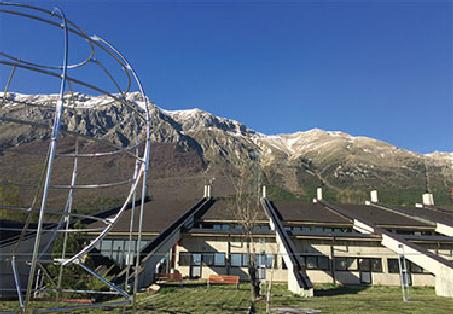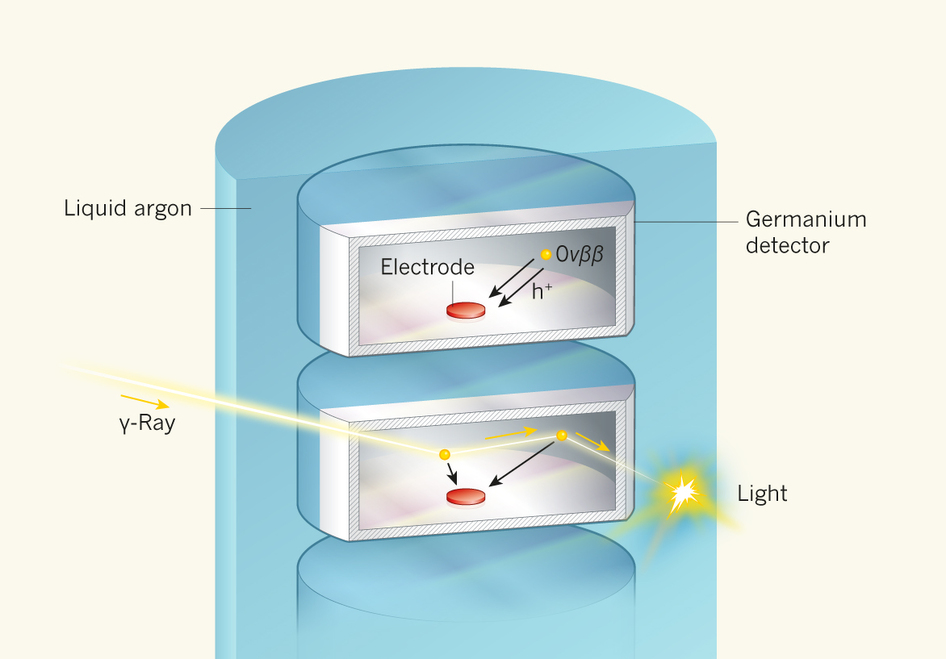Navigation auf uzh.ch
Navigation auf uzh.ch
The GERDA collaboration published new results on the hunt for neutrinoless double beta decay, April 6, 2017

(GERDA collaboration, Background-free search for neutrinoless double-beta decay of 76Ge with GERDA)
One unsolved cosmological question is matter dominance over antimatter in the Universe, unexplained by the Standard Model (SM). A possible explanation is that neutrinos are their own antiparticles, which could be validated by the observation of neutrinoless double beta decay (0nbb).
GERDA (GERmanium Detector Array) searches for this decay using germanium detectors operated directly in liquid argon. Uniquely, GERDA suppresses the background sufficiently to operate in the so-called zero-background regime, giving an excellent sensitivity to the half-life of 0nbb decay. The best fit to the data is no signal events, i.e. no signal for 0nbb decay is observed, with a limit on the half-life at 90% confidence level of T½ > 5.3 x 1025 yr, as published in Nature at the start of April (Vol. 544, No. 7648).

At our institute the group of Laura Baudis is participating in the experiment.